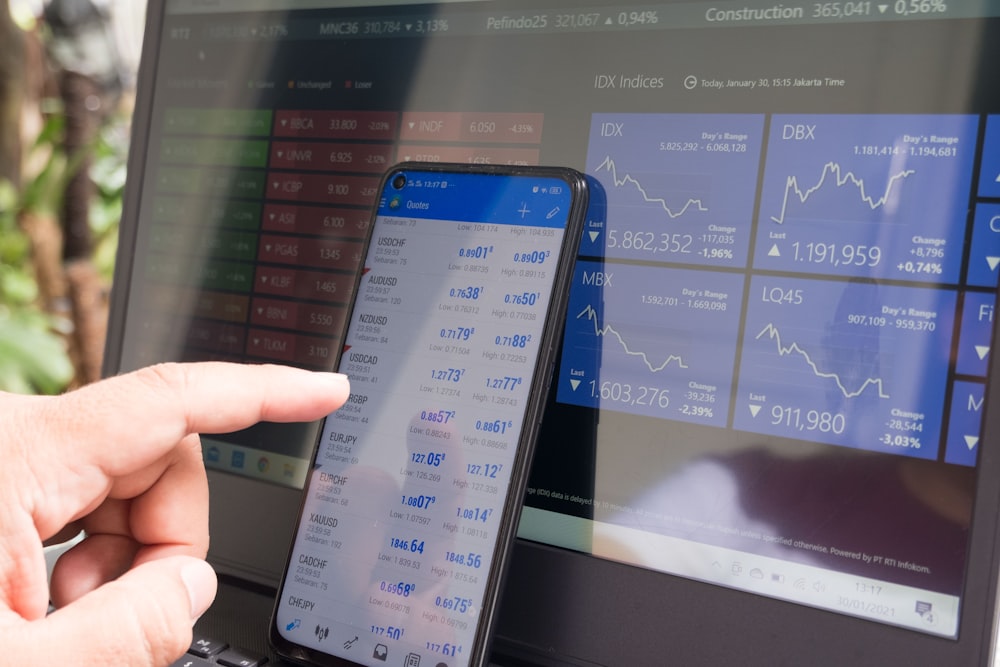NFP: Time To Sit Tight And Sharpen Your Pencil
Image Source: Unsplash
MARKETS
The S&P 500 and Nasdaq Composite took a slight breather on Thursday, dipping just a tad as investors cashed in some profits and opted for a wait-and-see approach ahead of a critical labour market report. Having basked in the afterflow of record highs the previous day, traders decided it was time to sit tight and sharpen their pencils.
All eyes are now on Friday's crucial U.S. nonfarm payrolls report. Recent data has hinted at a significant shift in the labour market balance, potentially giving the Federal Reserve the green light to start cutting interest rates.
Across the pond, the European Central Bank made headlines with its first rate cut since 2019, though in true central bank fashion, they remain glued to their data spreadsheets.
It’s typical to see a pause or even a slight pullback in market momentum ahead of such pivotal NFP reports. At this point, cooler data is the name of the game to coax the Fed off its “higher for longer” stance.
According to the CME's FedWatch tool, traders are betting on a 68% chance of a rate cut in September, with about two cuts expected this year. If the market's crystal ball is accurate, we’re looking at a global trend of central bank easing—except for Japan, which is happily marching to the beat of its policy normalization drum.
FOREX MARKETS
On Thursday, the ECB became the second G7 central bank in two days to slice interest rates, following months of not-so-subtle hints and meticulously crafted messaging.
Described as a landmark decision, the move was hardly a surprise. The ECB had spent months preparing the ground and fine-tuning its narrative.
“Based on an updated assessment of the inflation outlook, the dynamics of underlying inflation, and the strength of monetary policy transmission, it is now appropriate to moderate the degree of monetary policy restriction after nine months of holding rates steady,” the new statement read. “The inflation outlook has improved markedly, and inflation expectations have declined at all horizons.”
Yet, the forward guidance was about as clear as mud. The bank is “determined to ensure that inflation returns to its 2% medium-term target in a timely manner [and] will keep policy rates sufficiently restrictive for as long as necessary to achieve this aim.” Future policy decisions will “follow a data-dependent and meeting-by-meeting approach.”
Analysts dubbed Thursday’s move a “hawkish cut.” According to unnamed officials cited by Bloomberg, the ECB has “all but ruled out” a follow-up cut in July and may not be keen on another reduction in September either. One might expect the EUR/USD to climb higher, but FX traders, as always, are more captivated by the Fed’s next move. Perhaps the upcoming NFP report will offer the clearest crystal ball yet.
Since the global inflation shock of late 2021 into 2022, the yen's traditional role as a safe-haven asset during risk-off periods has taken a backseat. These days, it's all about yields. Risk-off episodes are now typically triggered by higher US yields (negative JPY), but with recession signals starting to flash amber, the JPY might once again step up as a safe haven if broader market derisking takes hold and the investors starts waving those recessionary red flags. While this isn’t our primary scenario, it’s worth keeping in the back of your mind, especially if the headline NFP prints below 150,000 or worse.
US economic data and the Fed will play a bigger role in triggering a turn and a drop in USD/JPY, but the BoJ could also soon join the party.
There are too many smoke signals to ignore: the BoJ is considering tweaking its current JGB buying policy, which involves purchasing around JPY 6 trillion per month. A slowdown in these purchases would likely lead to a decline in JGB holdings on the BoJ’s balance sheet. Market chatter suggests a reduction to JPY 5 trillion is on the table.
We maintain our stance on USD/JPY, emphasizing that despite the strong demand for carry trade, the most likely direction for USDJPY is downward, especially if the US economic data continues to show signs of rolling over.
When you find yourself in a range-bound market with a yo-yo-like moves, as in USD/JPY, flexibility becomes paramount in your trading decisions. If you're seeking a simpler way to bet on the US dollar weakening, consider opting for a different currency pair like GBP/USD or EUR/USD. These pairs may offer a smoother ride amidst the choppy FX waters.
OIL MARKETS
Crude oil prices rallied on hopes that OPEC might alter its production policy. However, the group dismissed the market’s bearish reaction to its decision to phase out voluntary cuts, stating it retains the option to pause or reverse production changes if necessary. Saudi Arabia’s energy minister, Prince Abdulaziz bin Salman, emphasized the alliance's commitment to market stability and its ability to react quickly to changes.
This news hit the market when it was already in oversold conditions, leading to a swift rebound. To call this anything but market manipulation would be an understatement. OPEC might be a self-serving entity, but it's undeniably a tradable one.
More By This Author:
Investors Are Getting Rate Cut Giddy Again
The Weaker Economic Signals Are Clear — It's Time For Proactive Leadership From Chair Powell
Is The "Bad News Is Bad News" Narrative Gaining Ground ?




